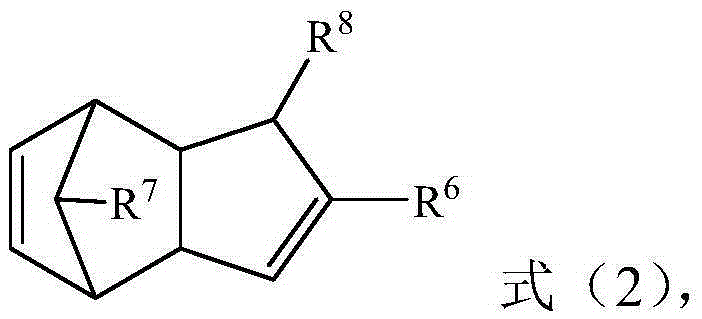Application of organosilane, polyolefin in-kettle alloy and preparation method thereof
A technology of organosilane and alloy in kettle, applied in the field of olefin polymerization
- Summary
- Abstract
- Description
- Claims
- Application Information
AI Technical Summary
Problems solved by technology
Method used
Image
Examples
preparation example Construction
[0024] The preparation method of the polyolefin still alloy provided by the present invention comprises making the first olefin monomer carry out the first polymerization reaction in the presence of a catalyst, and then passing the second olefin monomer into the polymerization reaction system to carry out the second polymerization reaction, so that The first olefin monomer is different from the second olefin monomer, wherein the first polymerization reaction and / or the second polymerization reaction is carried out in the presence of organosilane, the general formula of the organosilane is R 1 m SiX n (OR 2 ) k , where R 1 for C 2 -C 20 Hydrocarbyl and R 1 The end contains α-olefin double bond, norbornene group, cycloalkene group or dicyclopentadiene group, X is halogen, R 2 for C 1 -C 20 straight chain, branched or isomerized alkyl, m is an integer of 1-3, n is an integer of 1-3, k is an integer of 0-2, and m+n+k=4.
[0025] In addition, the specific selection of the...
Embodiment 1
[0038] This example is used to illustrate the preparation method of the polyolefin tank alloy provided by the present invention.
[0039] Under vacuum, 500 grams of liquid propylene monomer was added to the reactor, and then 0.25 mol of triethylaluminum and 20 mg of olefin polymerization catalyst (MgCl 2 / TiCl 4 / BMMF, where BMMF is the internal electron donor 9,9-dimethoxyfluorene, MgCl 2 、TiCl 4 The mass ratio with BMMF is 80:12:8) and 0.2g hydrogen, and then the reaction temperature is raised to 70°C for 0.2 hours. Then the residual propylene monomer in the reactor was evacuated and the temperature was lowered to 50° C., 0.10 mL of bis(7-octenyl) dichlorosilane was added, and then a mixed gas of 20 g of ethylene and 60 g of propylene was introduced into the reactor. , the reaction temperature was controlled at 90°C and the reaction was continued for 0.2 hours. After the reaction was completed, acidified ethanol was added to terminate the polymerization reaction, and then...
Embodiment 2
[0050] This example is used to illustrate the preparation method of the polyolefin tank alloy provided by the present invention.
[0051] Under vacuum, 500 grams of liquid propylene monomer was added to the reactor, and then 0.25 mol of triethylaluminum and 20 mg of olefin polymerization catalyst (MgCl 2 / TiCl 4 / BMMF, where BMMF is the internal electron donor 9,9-dimethoxyfluorene, MgCl 2 、TiCl 4 The mass ratio with BMMF is 80:15:5) and 0.2g hydrogen, and then the reaction temperature was raised to 70°C for 0.2 hours. Then the residual propylene monomer in the reactor was evacuated and the temperature was lowered to 50° C., and 0.05 mL of bis[2-(5-ethylidene-2-norbornenyl) ethyl] dichlorosilane was added, and then Pass the mixed gas of 20g ethylene and 60g propylene into the reaction kettle, control the reaction temperature at 90°C and continue the reaction for 0.5 hours. and ethanol at a temperature of 80°C for three times, and finally vacuum-dried at 60°C to obtain a po...
PUM
 Login to View More
Login to View More Abstract
Description
Claims
Application Information
 Login to View More
Login to View More - R&D
- Intellectual Property
- Life Sciences
- Materials
- Tech Scout
- Unparalleled Data Quality
- Higher Quality Content
- 60% Fewer Hallucinations
Browse by: Latest US Patents, China's latest patents, Technical Efficacy Thesaurus, Application Domain, Technology Topic, Popular Technical Reports.
© 2025 PatSnap. All rights reserved.Legal|Privacy policy|Modern Slavery Act Transparency Statement|Sitemap|About US| Contact US: help@patsnap.com


